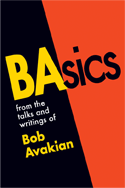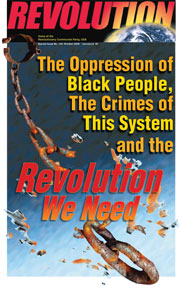U.S. War Crimes in Yemen
October 15, 2016 | Revolution Newspaper | revcom.us
On Saturday, October 8, hundreds of people gathered in Yemen’s capital Sana’a to mourn the death of the father of an official in the government backed by the Houthi movement and elements of the former regime. These are forces which have been under assault by Saudi Arabia and its allies, including the U.S., for the last 18 months.
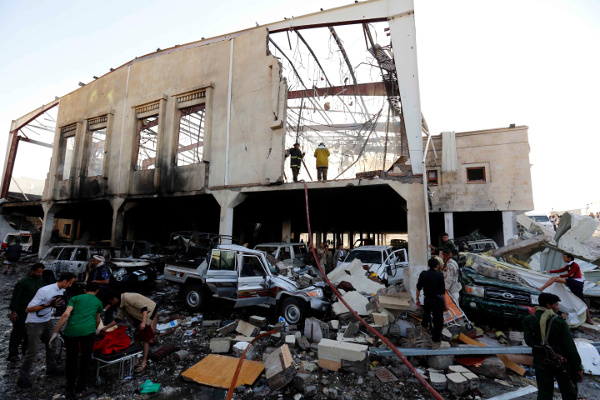
Aftermath of the Saudi bombing of the funeral hall, Sana'a, October 8. (AP photo)
Suddenly, Saudi warplanes struck—bombing the funeral reception hall multiple times. Over 140 mourners were massacred. Another 600 were wounded, including leading Houthi figures and other officials.
“There were over 800 people in the hall, including the elderly and children,” one survivor told journalists. “Suddenly we heard the sound of airplanes, and then the bombing took place. The first bomb ripped through the ceiling and exploded, with the basement destroyed as well. I was injured and was at a loss. The heat made me feel I was burning. I got up and ran toward the door, where people came in to rescue us. Just then, the second bomb came and hit those people coming to rescue us.” (Salim Saleh Rowaishan, quoted by Democracy Now!, October 10)
“When I got there, there were more than 50 burned bodies,” one witness cited by Human Rights Watch stated, “many where you can still tell the features, but half of their body was gone, half of their head was gone, but the others, it was very, very hard to tell who they were.”
This wasn’t a military base or an airfield. These weren’t troops engaged in combat. This was a funeral. Bombing it was a war crime!
The Saudis initially claimed they knew nothing of the attack, but soon said they’d conduct an investigation into “reports about the regrettable and painful bombing.”
“Regrettable”? “Painful”? The funeral massacre in Sana’a wasn’t an exception; it was a damning concentration of how the Saudis have waged the reactionary, U.S.-backed war they launched in March 2015.
Reactionary War in Yemen
Yemen is in the hellish grip of a reactionary civil war, fueled by reactionary regional and global powers.
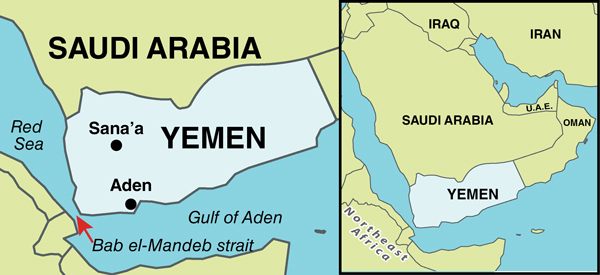 Map: revcom.us
Map: revcom.us
Yemen is an impoverished, relatively small country, which is largely rural. It is a society still characterized to a large degree by feudal relations. Yet its history and location make Yemen strategically important to both U.S. imperialism, and to the Islamic fundamentalist Kingdom of Saudi Arabia. Yemen is at the mouth of the Red Sea, which leads to the Suez Canal, through which enormous amounts of oil and global trade flow; it sits along Saudi Arabia’s southern border and is close to northeast Africa.
For 33 years, until 2011, Yemen was ruled by the pro-U.S., pro-Saudi despot Ali Abdullah Saleh. In 2011, hatred of Saleh’s regime erupted in massive nationwide protests, when the “Arab Spring” upheavals rocked the region. The U.S. decided Saleh had become a liability and forced him out. But the Yemeni state, in particular the military, remained in place. Major General Abd Rabbuh Mansur Hadi, who was backed by the U.S., Saudi Arabia, and other Gulf states, was installed as the head of state in early 2012. Hadi was no different or better than Saleh, and Yemen’s upheaval continued.
In August 2014 a combination of Houthi fighters and elements of Yemen’s military still loyal to Saleh seized control of Sana’a, the country’s capital city. Most Houthis (named after the leader of their 2004 uprising against the Saleh regime) live in the north and are members of the Zaidi branch of Shia Islam. Zaidis make up about a third of Yemen’s population. Zaidi religious authorities—imams—ruled North Yemen for centuries until the early 1960s. The Houthis are fighting under the reactionary Islamist banner of Ansar Allah (Partisans of God) and have been accused of massacres and indiscriminate killings themselves. They’re politically supported by and have some ties to the reactionary Islamic Republic of Iran. In February 2015, the Houthi-Saleh forces took over the central government, and President Hadi was driven into exile in Saudi Arabia.
Saudi Arabia felt this turn of events was a serious threat to its interests, including its contention with Iran. With U.S. backing, the Saudis pulled together a military alliance with other regional states and, on March 26, 2015, this alliance launched a savage bombing campaign against the Houthi-Saleh forces with the goal of restoring their puppet Hadi to power.
The Saudi War of Terror
The Saudis have been waging a war of terror through the air, and a war of starvation by naval and air blockade. Throughout this barbaric campaign, they’ve repeatedly hit civilian targets—hospitals, potato chip factories, neighborhoods, and schools. The UN reports that 4,125 civilians have been killed and 7,207 wounded since the Saudi air campaign began, mostly by the Saudis, dropping mostly U.S.-made bombs. One Yemeni parent wrote of his children saying, “we sleep afraid, we wake up afraid.” (New York Times, October 11).
And now they try and wash away all this blood and these monstrous crimes with words like “painful” and “regret.”
The U.S.—Neck Deep in Yemeni Blood
After the October 8 funeral massacre, the U.S. government acted like an innocent bystander, upset with the behavior of one of its friends. A White House spokesperson said the U.S. was “deeply disturbed” by the bombing, and the Saudi’s “troubling” attacks on Yemeni civilians. He pledged the Obama administration would review U.S. support for Saudi’s war and was “prepared to adjust our support so as to better align with U.S. principles, values and interests.” He insisted the U.S. wasn’t giving the Saudis a “blank check.”
In reality, the U.S. has been neck-deep in this war from the start, and neck-deep in Yemeni blood. Whatever its differences with the Saudi regime―and there are real differences and sharp tensions―it remains a key cog in the U.S. global empire. The rulers of the U.S. are compelled to back Saudi Arabia. And back Saudi Arabia they have.
The U.S. has sold Saudi Arabia $110 billion in arms under the “antiwar” President Barack Obama. It’s been arming and supporting Saudi Arabia’s vicious, criminal bombing war against the Houthis for the last 18 months. The Saudis are flying U.S.-built planes, dropping U.S.-built bombs, getting refueled by U.S. air tankers (over 5,700 times at last count) and getting U.S. technical and intelligence support, including from a team of military personnel sent by the Pentagon to Saudi Arabia to help plan its air war.
This is why fragments from a U.S.-made bomb were found at the scene of the October 8 Sana’a funeral massacre!
The U.S. has kept up this support, including recently selling the Saudis an additional $1.15 billion in additional arms, even after repeated, well publicized Saudi massacres of civilians. And they did this after the Obama administration was warned by government lawyers it could be considered a co-belligerent in the war under international law and implicated in war crimes.
These are the “principles, values, and interests” the U.S. pursues out all over the world.
U.S. Cruise Missiles: Not Enforcing “Freedom of Navigation,” but Enforcing a Blockade Starving Millions
The U.S. rulers have been acting in the shadows during Saudi Arabia’s savage war. Until now.
Early on Thursday, October 13, five days after the funeral massacre, a U.S. destroyer, operating off Yemen’s coast, fired three cruise missiles. They destroyed what the U.S. says were Houthi-controlled radar stations. The U.S. Navy claimed this was “self-defense” in retaliation for the firing of several missiles at another U.S. warship sailing off Yemen in the days before. The ship was not hit, the Houthis deny they fired any missiles at U.S. ships, and the U.S. produced no evidence that they had.
Afterward Pentagon officials acted as if this attack, which was approved by President Obama, had nothing to do with the 18-month war between Saudi Arabia and Houthi-led factions in Yemen. They insisted that the U.S. was not seeking “a wider role in the conflict,” and that the missile attack on Yemen was simply a matter of protecting the “our personnel, our ships, and our freedom of navigation in this important maritime passageway,” as if the ships were on routine patrols.
But these weren’t routine patrols. The week before the attacks, the U.S. had dispatched these warships to Yemen’s coast because someone—reportedly Houthi forces—hit and nearly sank a ship from the United Arab Emirates. What was a ship from the UAE doing in the area? It was part of an air and sea blockade the Saudi-led coalition has imposed on Yemen since the beginning of the war.
Yemen is a country that imports 70 percent of its fuel, 90 percent of its food, and 100 percent of its medicines! The Saudi-led coalition, including Egypt and other Gulf states, has been strangling and starving this already impoverished, vulnerable population with a blockade that, according to the UN, has cut off 85 percent of the country’s imports—including medicine, water, fuel, and, yes, food. The Saudis have even bombed major airfields and bridges to prevent supplies from entering Yemen, especially Houthi-controlled areas.
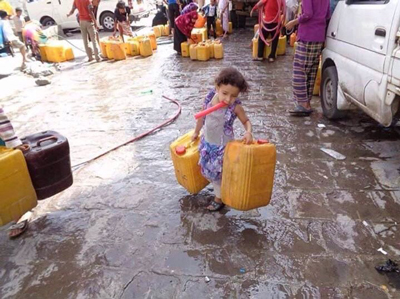
Some 80% of the people in Yemen are in desperate need of basic necessities due to long-term extreme poverty drastically worsened by Saudi Arabian attacks and fighting among other reactionary forces. The girl above is one of nine million children across Yemen struggling to get access to safe water. (Photo: @UNICEF/Twitter)
This blockade has had horrendous consequences for Yemen’s people: half the population—some 14 million people—are now suffering hunger or malnutrition. Of Yemen’s roughly 28 million people, 80 percent—more than 22 million Yemenis—are in desperate need of humanitarian aid. There are dire warnings that Yemen is on the brink of famine and collapse. Starving and punishing a whole population is a towering war crime!
The “innocent bystander” America has backed this from the start. The U.S. Navy, which claims to merely be upholding “freedom of navigation,” hasn’t been insisting that food and medical aid, arriving by ship, should be able to penetrate the Saudi naval blockade and deliver needed aid! Just the opposite. In fact, early in the war, the U.S. stopped an Iranian ship from sailing to Yemen, claiming it carried arms. In other words, the U.S. hasn’t been protecting everyone’s “freedom of navigation”—it’s been supporting and enforcing the Saudi-led blockade of Yemen.
Now the U.S. is deploying warships to Yemen’s coast to protect the ships carrying out this criminal blockade. And the U.S. attacked Houthi installations. This constitutes direct military support for—and for the first time, direct military involvement—in the criminal Saudi blockade and its war. (And these U.S. cruise missiles also sent a broader message: no one threatens America’s naval enforcers with impunity.)
What the Fuck Is the U.S. Navy Doing in the Red Sea Anyway?
Imperialism—Not “Self Defense”
The U.S. is directly enabling Saudi Arabia’s air massacres and mass starvation of Yemen’s people—and now directly firing cruise missiles in support of the Saudi war effort for their reactionary interests. Why?
The reactionary rulers of Saudi Arabia are desperately fighting to maintain their extremely oppressive, Islamic fundamentalist, absolute monarchy. They have been shaken by shifts in the world economy and the global petroleum market, as well as by the 2011 “Arab Spring” upheavals. They are locked in a range of conflicts with the reactionary Islamic Republic of Iran and the growth of Iranian influence in Syria, Iraq, Lebanon, and Palestine. They’re concerned that rapidly shifting sands of regional alliances will leave their regime in a more precarious situation. Everywhere they’ve sought to fund, arm, and restore tyrants they can deal with. With U.S. backing, they organized an Arab League initiative—supported by Egypt, Jordan, and the Gulf States—to form a 40,000-man military response force to combat Iranian influence in the region.
The Saudis are increasingly nervous about the erosion of U.S. power in the region in the wake of the failure of the U.S. rulers to restructure and strengthen the U.S.-dominated regional order, including in Afghanistan and Iraq. The U.S.-Iran nuclear deal, which was bitterly opposed by the Saudis, as well as the prospect of a Russian-Assad victory in the Syrian war, as well as the ongoing fragmentation of Iraq, have heightened Saudi fears and intensified its fierce regional rivalry with the Islamic Republic of Iran. And Saudi Arabia has long considered Yemen, which is on its southern border, important to its stability and security.
For all these reasons, the Saudis have been determined to crush the Houthi-Saleh uprising. This uprising could give Iran further influence in the region (even as it does not appear Iran is providing the Houthis with much, if any, military support). These tensions and concerns were reflected in the 2015 “shake-up” within the Saudi monarchy and royal family, which reportedly has put proponents of more aggressive Saudi action in charge. (New York Times, April 30, 2015)
For their part, the U.S. imperialists are desperately maneuvering and fighting to maintain their overall regional and global dominance over a world of exploitation and oppression (and there are very sharp arguments in their own ranks over how to do that, including over exactly how to deal with Saudi Arabia). Saudi Arabia—the world’s leading oil exporter with the largest petroleum reserves on the planet and enormous cash reserves—has been a crucial pillar of the U.S. empire since the 1940s. So the U.S. is determined to maintain its stability, including by reassuring the Saudis that in the wake of its nuclear deal with Iran, and ongoing conflicts and tensions over other issues, the U.S. will continue to stand by the Saudi kingdom.
This also means making clear to Iran that the U.S. is determined to remain the region’s dominant power—including by combating Iranian moves that could erode that. One of those interests is global—maintaining the U.S. status of military guarantor (dominator) of trade and navigation, in this case through the Persian Gulf, the Arabian Sea, and the Suez Canal, which are major arteries of world trade. For instance, some 30 percent of world maritime oil shipments flow through the Persian Gulf and more than eight percent through the Suez Canal. In addition, Russia’s growing military involvement and assertiveness in the region—particularly in Syria—looms very large for the U.S., and heightens the importance of its alliance with Saudi Arabia. (For background see: “Obama & U.S. Imperialism: Pushing Yemen Deeper into Hell,” Revolution/revcom.us, May 4, 2015.)
The rulers of the U.S. are behind horrific and ongoing crimes against humanity in Yemen. They are backing and enabling the Saudi massacre in Yemen, and now directly, militarily, enforcing a barbaric blockade aimed at starving the civilian population.
STOP WARS OF EMPIRE, ARMIES OF OCCUPATION, AND CRIMES AGAINST HUMANITY!
Volunteers Needed... for revcom.us and Revolution
If you like this article, subscribe, donate to and sustain Revolution newspaper.

